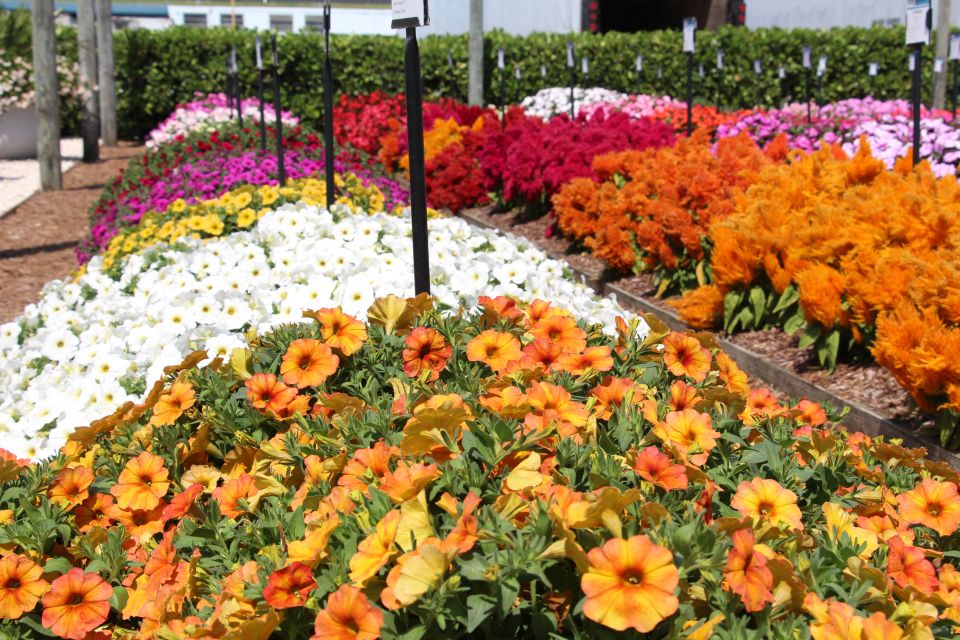Allan Armitage on the Top Floriculture Industry Trends for 2023

Bright colors will always be a trend for the annuals industry. Gardeners seek out varieties that add a pop of color to their landscape beds, decks, and patios. Photo: Janeen Wright
How often have you been asked, “What’s the next big thing out there?” Occasionally the answer is a plant, but more often than not, it is a trend. Every breeder and grower wants to know what people are talking about in the shadowed corners of horticulture.
Of course, there are no shadowed corners. Trends slowly ease their way into our world over time, and then suddenly it seems they are exploding all around us. Some trends are simply “progress”, like online marketing, automation, and EV cars. People who jump onto such global ideas early become the trendsetters.
More specifically to the ornamental industry, some plant groups seem to be like Phoenixes. Succulents and houseplants have been around forever, but now an entire generation has reembraced them. Domestic cut flowers are not about to displace flowers from overseas, but they are a definite trend in this industry.
Fads come and go, but trends seldom go away. Once established, they usually remain an important part of our market. Bedding plants in the ’70s and ’80s became the color trend that “colors” everything we do. Perennials were a huge trend in the ’80s, giving rise to the tsunami of cone flowers, hydrangeas, and hellebores we see today. Veggies have always been garden staples, but now they are trending as patio vegetables.
If asked my thoughts on what retailers, garden centers, and my daughters will be buying this spring, I think of trends, not plants. Everyone has their own opinions as to what is washing over us, here are mine.
Solutions: While we talk about the next great calibrachoa or hydrangea, the salesperson on the floor of the garden center is being quizzed about plants that can be used under a maple, or something for shade or fragrance. A customer may come in looking for that new calibrachoa, or even looking for what’s new, but more often that customer is looking for solutions.
Color: Thank goodness we have staked out color as our own. The annual plant business would dry up otherwise. There are less than a handful of annuals that deer don’t love, fewer that have fragrance, and even fewer that are native. But oh my, how they flower and how they have satisfied our obsession for color in the landscape, particularly on the deck.
Native: The demand for natives started as an ecological movement. Natives and “eco” became inseparable and terms like eco-restoration, eco-swales, and of course, eco-friendly landscaping, unknown 20 years ago, have become buzzwords today. Breeders saw the writing on the wall and the breeding (and marketing) of nativars vaulted the native gardening movement forward. Today, natives have become a necessity on every availability list. Any landscaper who chooses to include coreopsis, rudbeckia, or hydrangea for whatever reason can also be applauded for being a native plant supporter.
Pollinators: Man’s activities have messed up many things in nature, including nesting sites and nectar plants for the Monarch butterfly. Say what you want about the demise of the monarch, it is now the symbol of pollinators everywhere. It used to be the very sight of a bee or wasp made people run, but not so today. The interest in monarchs has encouraged people to invite moths, bees, and even wasps to their gardens and landscapes. Who would’ve thought we would welcome wasps? Unfortunately, pollinators and native species have been joined at the hip, as if the nectar of a salvia is beneath a butterfly or bee. That is simply rubbish. To those people, we need to point out the hundreds of pollinators on nativars as well as those teeming about non-natives like salvia and calamintha. So, let’s give everyone what they want, and shout out how our products help enhance pollinators.
Destruction: By destruction, I am not referring to acts of God or even acts of bulldozing, but rather acts of rabbits, squirrels, armadillos, and deer. This is the No. 1 reason why people are not buying plants. Nothing else comes close, and it is only going to get worse. I am pleased to see that as an industry, we have accepted that we must battle this problem head on. And for many growers, this is an opportunity for them to grow and market “deer-proof” plants. And don’t get me started about armadillos — Geez!









